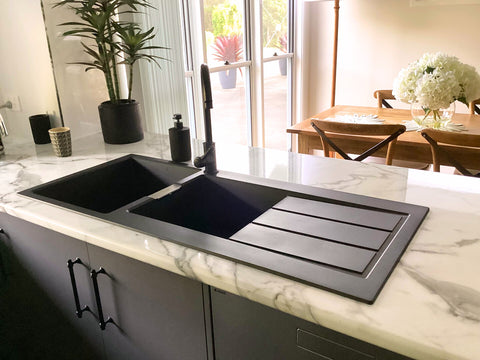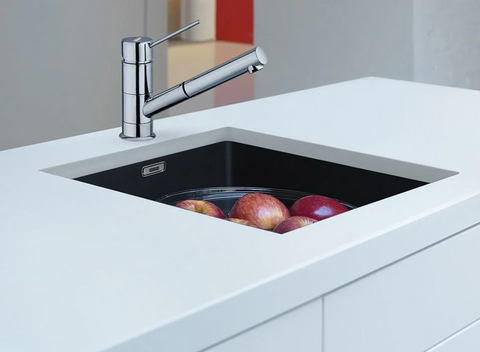Tools and Materials Needed

- New kitchen sink
- Kitchen tap
- Adjustable wrench
- Screwdriver
- Plumber’s tape
- Bucket
- Utility knife
- Tape measure
- Silicone caulk
- Caulking gun
- Hacksaw (if needed for cutting pipes)
Step 1: Prepare Your Workspace
-
Clear the Area: Empty the cabinet under the sink to give yourself ample workspace. Place a bucket under the sink to catch any water that might spill during the process.
- Turn Off the Water Supply: Locate and turn off the shut-off valves under the sink for both hot and cold water. Open the kitchen tap to drain any remaining water from the pipes.
Step 2: Remove the Old Sink
-
Disconnect the Plumbing: Using an adjustable wrench, disconnect the water supply lines from the kitchen tap. Be prepared for a small amount of water to spill out. Next, disconnect the drain pipes from the sink.
-
Detach the Sink: Depending on how your sink is mounted, you may need to remove clips or screws securing it to the countertop. Use a utility knife to cut through any caulk or adhesive sealing the sink to the countertop.
- Lift Out the Old Sink: Carefully lift the sink out of the countertop. If it's heavy or awkward to handle, consider asking for help to avoid injury or damage to your countertops.
Step 3: Prepare the New Sink
-
Check the Fit: Place the new kitchen sink into the countertop cutout to ensure it fits properly. If adjustments are needed, use a jigsaw or other appropriate tool to modify the opening.
- Install the Kitchen Tap and Accessories: It’s often easier to install the kitchen tap, soap dispenser, or other accessories before placing the sink into the countertop. Follow the manufacturer’s instructions for installation.
Step 4: Install the New Sink
-
Apply Plumber’s Putty: Roll plumber’s putty into a thin rope and apply it around the underside edge of the sink flange. This will help create a watertight seal between the sink and the countertop.
-
Position the Sink: Carefully lower the new sink into the countertop cutout. Press down firmly to ensure a good seal with the plumber’s putty. If your sink uses mounting clips, secure them according to the manufacturer’s instructions.
- Reconnect the Plumbing: Attach the water supply lines to the new kitchen tap, using plumber’s tape on the threads to ensure a good seal. Reconnect the drain pipes to the sink’s drain outlet.
Step 5: Final Touches
-
Test for Leaks: Turn the water supply back on and run the kitchen tap. Check all connections for leaks and tighten any fittings as needed.
-
Seal the Sink Edges: Apply a bead of silicone caulk around the edge of the sink where it meets the countertop. Smooth the caulk with a wet finger or a caulking tool for a clean finish.
- Clean Up: Wipe down the sink and surrounding area to remove any excess plumber’s putty or caulk.
Replacing a kitchen sink can greatly enhance the functionality and appearance of your kitchen. By following these steps, you can ensure a successful installation and enjoy your new sink for years to come. This guide is tailored for homeowners in Australia, where kitchen tap designs and sink styles may vary, ensuring you get the perfect fit for your home.
Remember, if you encounter any difficulties or feel unsure about any part of the process, it’s always a good idea to consult with or hire a professional plumber. Happy DIY-ing!
By incorporating these steps, you'll have a seamless experience replacing your kitchen sink, making your kitchen in Australia a more enjoyable space for cooking and gathering.




